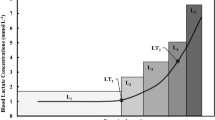Abstract
Eight subjects were taught to decrease their heart rates via biofeedback training. Four of these received contingently faded, beat-by-beat analogue feedback and contingent reinforcement each time their performance met a specified and adjusting criterion. The other four received continuous, beat-by-beat analogue feedback, but not the contingent reinforcement. Subjects in the two groups were yoked to ensure equal densities of reinforcement. Subjects in the first group were asked to decrease heart rates 15% from baseline and were then trained using only 75%, 50% and 25% of beat-by-beat feedback. It was hypothesized that the immediate reinforcement of appropriate behavior and the contingent fading(following mastery) of feedback would aid in the generalization of the response. Following completion of all criterion steps or 10 training sessions, whichever came first, all subjects were tested with no feedback and no contingent reinforcement. The group receiving contingently faded feedback training showed a significantly greater heart rate decrease in the training sessions and also the test session. These results were interpreted as indicating that biofeedback can be conceptualized as an operant conditioning paradigm, and that the use of operant techniques may help subjects produce clinically significant changes.
Similar content being viewed by others
References
Blanchard, E. G., & Young, L. D. Self-control of cardiac functioning: A promise as yet unfulfilledPsychological Bulletin 1973,79 145–163.
Ferster, C. B., & Skinner, B. F.Schedules of reinforcement. Englewood Cliffs, New Jersey: Prentice-Hall, 1957.
Gatchel, R. J. Frequency of feedback and learned heart rate control.Journal of Experimental Psychology 1974,103 274–283.
Gatchel, R. J. The therapeutic effectiveness of voluntary heart rate control in reducing anxiety: A case report.Journal of Consulting and Clinical Psychology 1977,45 689–691.
Gatchel, R. J. Biofeedback and the treatment of fear and anxiety, In R. J. Gatchel & K. P. Price (Eds.),Clinical applications of biofeedback: Appraisal and status. New York: Pergamon Press, 1979.
Gatchel, R. J., & Price, K. P. (Eds.).Clinical applications of biofeedback: Appraisal and status. New York: Pergamon Press, 1979.
Gatchel, R. J., & Proctor, J. D. Effectiveness of voluntary heart rate control in reducing speech anxiety.Journal of Consulting and Clinical Psychology 1976,44 381–389.
Harvey, J. H., & Smith, W. P.Social psychology: An attributional approach. St. Louis: C. V. Mosby, 1977.
Lang, P. J. Learned control of human heart rate in a computer directed environment, In P. A. Obrist, A. H. Black, J. Brener, & L. V. DiCara (Eds.),Cardiovascular psychophysiology Chicago: Aldine, 1974.
Miller, N. E. Learning of visceral and glandular responses.Science 1969,163 434–445.
Miller, N. E. Biofeedback and visceral learning. In M. R. Resenzweigand & L. W. Porter (Eds.),Annual review of psychology (Vol. 29). Palo Alto: Annual Reviews, 1978.
Shapiro, D., & Surwit, R. S. Lerned control of physiological function and disease. In H. Leitenberg (Ed.),Handbook of behavior modification and behavior therapy. Englewood Cliffs, New Jersey: Prentice-Hall, 1976.
Siegel, S.Non-parametric statistics for the social sciences. New York: McGraw-Hill, 1956.
Silver, B. V., & Blanchard, E. B. Biofeedback and relaxation training in the treatment of psychophysiological disorders: Or, are the machines really necessary?Journal of Behavioral Medicine 1978,1 217–239.
Skinner, B. F.The technology of teaching. Englewood Cliffs, New Jersey: Prentice-Hall, 1968.
Weiss, T., & Engel, B. T. Operant conditioning of heart rate in patients with premature ventricular contractions.Psychosomatic Medicine 1971,33 301–321.
Author information
Authors and Affiliations
Additional information
This research was supported in part by a grant to Robert J. Gatchel from the National Heart, Lung, and Blood Institute (Grant No. NIH HL 21426-01).
Rights and permissions
About this article
Cite this article
McKinney, M.E., Geller, D., Gatchel, R.J. et al. The production and generalization of large-magnitude heart rate deceleration by contingently faded biofeedback. Biofeedback and Self-Regulation 5, 407–416 (1980). https://doi.org/10.1007/BF01001356
Received:
Issue Date:
DOI: https://doi.org/10.1007/BF01001356




